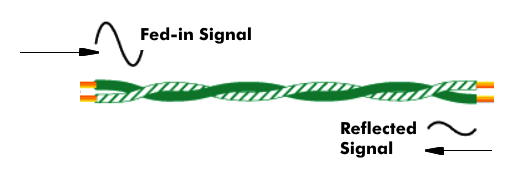return loss (wiring) (RL)
Return loss, also called backscatter attenuation, is a reflection factor. Return loss exists for cables and optical fibers. It is the ratio of emitted power to reflected power, expressed as a logarithmic measure in decibels( dB).
For metallic cables, return loss is the ratio of injected energy to backscattered energy. Such backscatter occurs at inhomogeneities within the cable or in the RF connector. Inhomogeneities can occur in cable manufacturing if the bending radius is undershot during installation, at the connection point when passing from one cable to another, when connecting the cable to a device, or at the terminating resistor. At all inhomogeneities, a portion of the signal energy is reflected and propagates in the opposite direction in the cable. This signal portion is put in relation to the injected signal level. The ratio is the return loss, which is specified in decibels and is directly related to the standing wave ratio( VSWR).
In optical transmission media, optical return loss represents the ratio of injected light energy to reflected light energy. In this case, the injected light is reflected at splicesor at end faces in the FO connectors. To increase return loss, some end face couplers treat the FO end faces so that the reflected light rays leave the fiber optic cable rather than being reflected back into it. This technique of helical- bevel coupling contributes to a significant improvement in return loss, or high return loss( HRL).
The optical return loss ( ORL) depends on the wavelength of the injected light energy and on the optical fiber.


